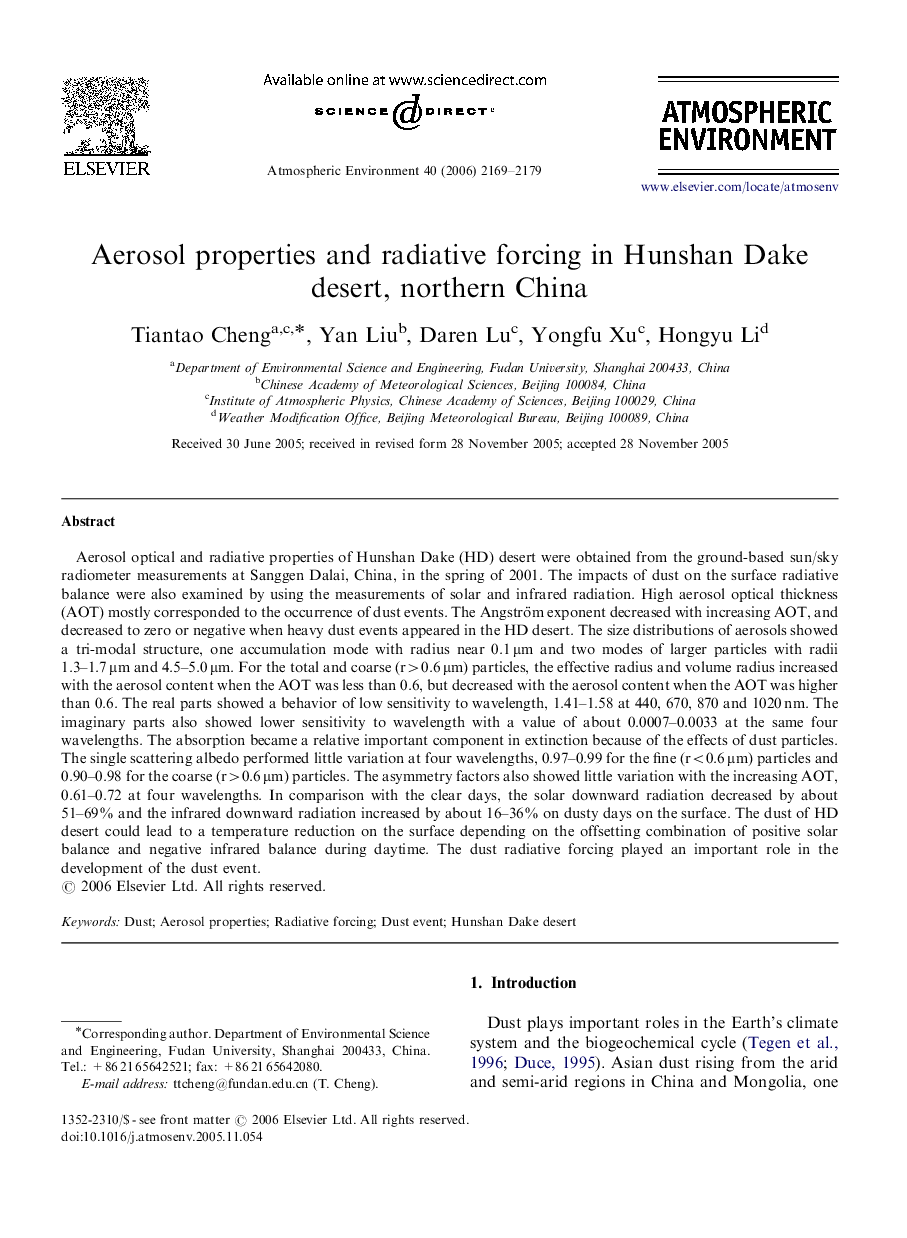| Article ID | Journal | Published Year | Pages | File Type |
|---|---|---|---|---|
| 4445063 | Atmospheric Environment | 2006 | 11 Pages |
Aerosol optical and radiative properties of Hunshan Dake (HD) desert were obtained from the ground-based sun/sky radiometer measurements at Sanggen Dalai, China, in the spring of 2001. The impacts of dust on the surface radiative balance were also examined by using the measurements of solar and infrared radiation. High aerosol optical thickness (AOT) mostly corresponded to the occurrence of dust events. The Angström exponent decreased with increasing AOT, and decreased to zero or negative when heavy dust events appeared in the HD desert. The size distributions of aerosols showed a tri-modal structure, one accumulation mode with radius near 0.1 μm and two modes of larger particles with radii 1.3–1.7 μm and 4.5–5.0 μm. For the total and coarse (r>0.6 μm) particles, the effective radius and volume radius increased with the aerosol content when the AOT was less than 0.6, but decreased with the aerosol content when the AOT was higher than 0.6. The real parts showed a behavior of low sensitivity to wavelength, 1.41–1.58 at 440, 670, 870 and 1020 nm. The imaginary parts also showed lower sensitivity to wavelength with a value of about 0.0007–0.0033 at the same four wavelengths. The absorption became a relative important component in extinction because of the effects of dust particles. The single scattering albedo performed little variation at four wavelengths, 0.97–0.99 for the fine (r<0.6 μm) particles and 0.90–0.98 for the coarse (r>0.6 μm) particles. The asymmetry factors also showed little variation with the increasing AOT, 0.61–0.72 at four wavelengths. In comparison with the clear days, the solar downward radiation decreased by about 51–69% and the infrared downward radiation increased by about 16–36% on dusty days on the surface. The dust of HD desert could lead to a temperature reduction on the surface depending on the offsetting combination of positive solar balance and negative infrared balance during daytime. The dust radiative forcing played an important role in the development of the dust event.
